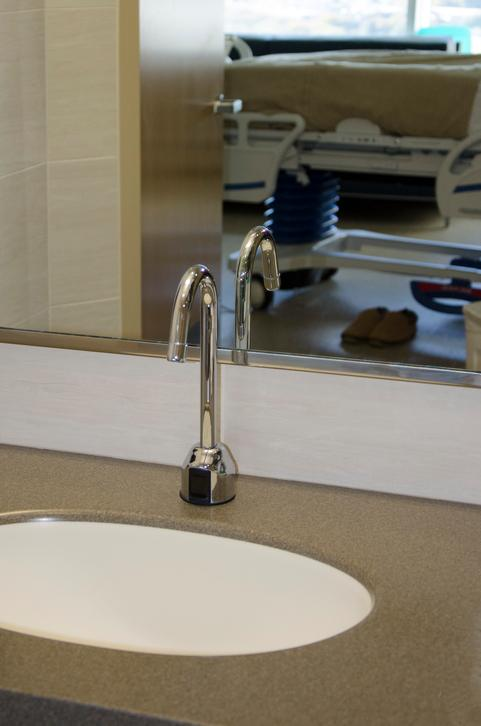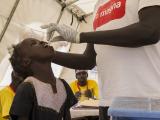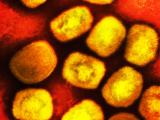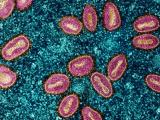A study conducted in UK hospitals found mpox virus (MPXV) clade 1b DNA in 73% of surface samples and 7% of air samples from infected patients' rooms, as well as live virus in 19% of surface samples that underwent viral isolation.
Scientists at the UK Health Security Agency sampled the rooms and anterooms of seven of the first eight mpox clade 1b patients admitted for clinical observation at centers dedicated to airborne high-consequence infectious diseases from October 2024 through January 2025.
The virus is spread primarily through intimate contact with an infected person but may also be transmitted via contaminated objects.
The findings were published yesterday in Eurosurveillance.
Swabs from mildly ill patients tended to have low viral levels
Of the 7 patients, 4 were men; all were aged 60 years or younger. Four patients had traveled to non-UK regions endemic for clade 1b MPXV, and three were infected by household members in the United Kingdom.
The researchers sampled rooms during patient occupation or about 16 hours after patient release. One sampled room was occupied by two cohabiting infected patients (Cases 2 and 3), and a room occupied by another patient (Case 5) was sampled twice 6 days apart. All rooms were cleaned daily.
Interestingly, samples collected around Case 6 showed high Cq values [low viral levels] or had no MPXV DNA detected despite this individual having 'moderate' clinical severity.
The team sampled the same surfaces in all rooms and collected air samples both before and during a bed-linen change, but minor departures were made to account for different room arrangements (eg, the absence of a sink in one room). Certain samples with detectable MPXV DNA were used for virus isolation.
MPXV DNA was detected in 66 of 90 surface samples (73%). Swabs from frequently touched surfaces often contained MPXV DNA (eg, bathroom tap handles, which were positive in all seven samples). Likewise, swabs from shower handles and toilet flushes contained detectable MPXV DNA from six of seven sampling episodes.
Samples obtained from the rooms of Cases 2, 3, and 4, who all had mild illnesses, often had no or only low levels of MPXV DNA. "In addition, all three cases were female and acquired mpox via household transmission which may contribute to the observed severity score; however, it is also important to note that these sampling events were performed post patient discharge which may also contribute to the lower levels of DNA observed," the authors wrote.
More frequent and higher levels of MPXV DNA, however, were seen for Cases 1, 5, and 8, who had moderate or severe infections and were in the isolation room during sampling.
"Interestingly, samples collected around Case 6 showed high Cq values [low viral levels] or had no MPXV DNA detected despite this individual having 'moderate' clinical severity," the researchers wrote. "This may be explained by this room being cleaned 12 hours prior to sampling as opposed to 24 hours for the remaining cases."
May pose risk of onward spread
Virus isolation was attempted on 21 samples with detectable MPXV DNA, with four containing infectious virus (ie, light switch from Case 1's isolation room, tap handle from the ensuite bathroom of Case 5, the anteroom exit for Case 5, and the window ledge of the room of Case 8).
The results from the currently reported investigations confirm that clade Ib mpox patients contaminate their immediate environment and that infection-competent virus may be present, which may pose a risk of onward transmission.
Viral cultures derived from these four samples all had undetectable levels of MPXV DNA on day 0 of viral isolation. All positive viral isolations were from the isolation rooms of patients with moderate or severe disease and were collected during hospitalization.
Of air samples collected from the seven isolation rooms, only one contained MPXV DNA (bed linen change sample from Case 5), but live virus was not identified.
The researchers said the level of contamination likely depends on factors such as mpox clinical severity (eg, number of lesions), time spent in that environment, time since the patient was last present, and the frequency of cleaning.
"The results from the currently reported investigations confirm that clade Ib mpox patients contaminate their immediate environment and that infection-competent virus may be present, which may pose a risk of onward transmission," the researchers wrote.
"While it is not possible to accurately quantify this risk using data from these investigations, they do support the need for defined infection prevention and control (IPC) measures when cases are detected to minimise the risk of exposure to viable virus in the environment that could present a transmission risk," they added.



















